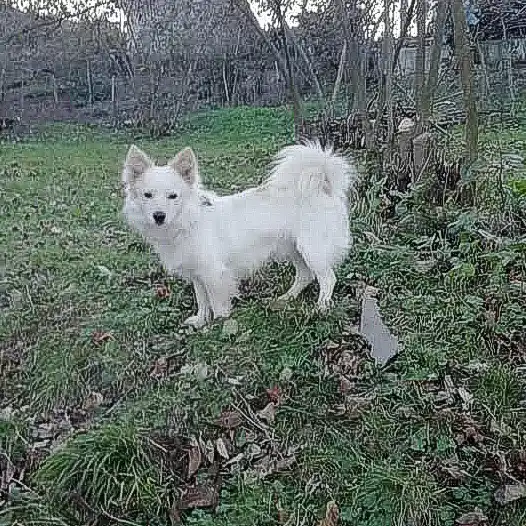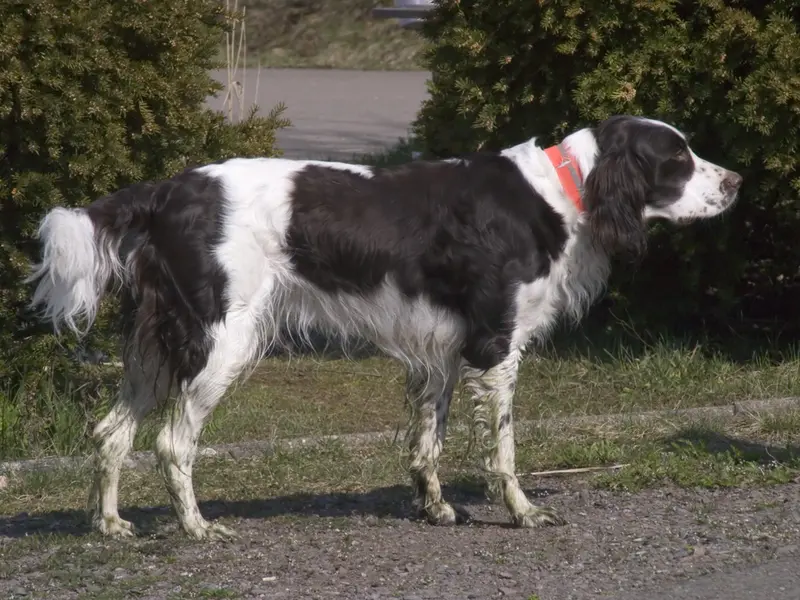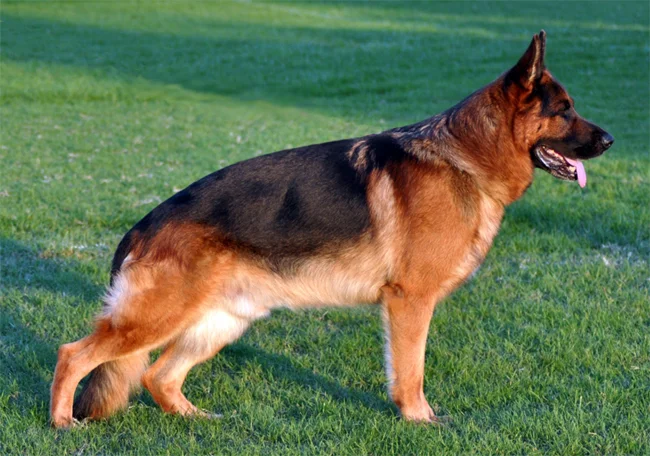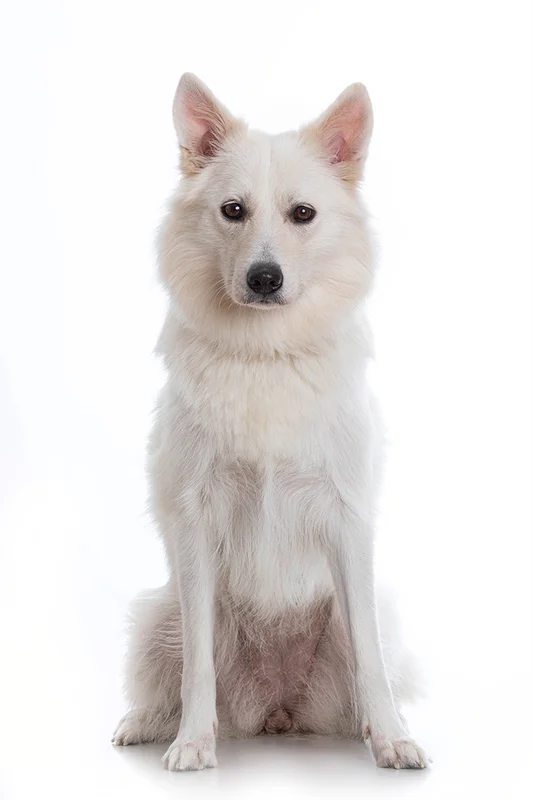Smithfield
The Smithfield is a loyal and intelligent herding breed, known for its affectionate nature and adaptability as a family companion.
Overview
🐕Breed Overview
✨Key Traits
💡What Makes Smithfield Special
Smithfields are characterized by their strong work ethic and intelligence, which stem from their herding background. They are highly adaptable, excelling in various roles, from working dogs to family companions.
Their loyalty and protective instincts make them excellent watchdogs, while their playful nature ensures they are engaging and fun to be around. Smithfields are also known for their versatility, participating in dog sports and activities that challenge their physical and mental abilities.
Their affectionate demeanor and compatibility with children make them a great choice for families, while their intelligence allows them to learn quickly and adapt to new situations.
The Smithfield is a remarkable breed with a rich history rooted in herding. Known for their intelligence and agility, these dogs were originally bred in England to assist farmers in managing livestock. Their strong work ethic and adaptability have made them not only exceptional herders but also beloved family companions.
Smithfields are characterized by their medium-sized, sturdy build, with a distinctive coat that can vary in color. They are known for their affectionate nature, forming strong bonds with their families and being particularly good with children. Their playful demeanor and high energy levels require regular exercise and mental stimulation to keep them happy and healthy.
Smithfields excel in various activities, including agility, obedience, and herding trials, showcasing their versatility and intelligence. Their loyalty and protective instincts make them excellent watchdogs, while their friendly disposition ensures they are well-suited for family life. With proper training and socialization, Smithfields can thrive in various living situations, from urban apartments to rural homes.
Their unique blend of work drive and companionship makes them a truly special breed, perfect for active families looking for a devoted and engaging canine companion.
🎉Fun Facts
Smithfields are known for their unique herding techniques, often using their intelligence to outsmart livestock.
Smithfields can excel in various dog sports, showcasing their agility and intelligence.
They have a playful side and enjoy interactive games with their families.
Breed Characteristics
Family & Friends
Good Behavior
Get Up & Go
Household Harmony
Temperament & Personality
✨Key Traits
🐕Core Temperament
Smithfields are known for their friendly and affectionate temperament. They are loyal companions who thrive on human interaction and enjoy being part of family activities.
Their intelligence and eagerness to please make them highly trainable, although they can be somewhat independent and stubborn at times. Smithfields are protective of their families, displaying a natural instinct to guard their home.
They are generally good with children and other pets, especially when socialized from a young age. Their playful and energetic nature requires regular exercise and mental stimulation to keep them happy and well-adjusted.
💫Personality Profile
Smithfields are known for their friendly and affectionate nature. They form strong bonds with their families and are particularly good with children, making them excellent family pets.
Their intelligence and eagerness to please make them highly trainable, although they can exhibit a stubborn streak at times. They thrive on social interaction and enjoy being part of family activities.
Smithfields are also protective of their loved ones, displaying a natural instinct to guard their home and family. Their playful demeanor and high energy levels require regular exercise and mental stimulation to keep them happy and healthy.
🔊Vocal Tendencies
Smithfields are moderate barkers, using vocalizations to communicate with their owners and alert them to potential intruders. They may bark when playing, greeting people, or expressing excitement.
While they are not excessive barkers, their protective instincts may lead them to bark more frequently in unfamiliar situations. Training can help manage their barking tendencies, ensuring they are well-mannered and responsive to commands.
Affection & Social Traits
Energy & Activity
Communication Style
Care Requirements
🏃♂️Exercise Requirements
Daily Exercise
Smithfields are a highly active breed that requires a significant amount of exercise to maintain their physical and mental health. Ideally, they should engage in at least 60 to 90 minutes of vigorous activity each day. This can include long walks, runs, or play sessions in a secure area.
They thrive on activities that challenge their agility and intelligence, such as agility training, herding exercises, or interactive games that stimulate their problem-solving abilities. Puppies should have shorter, more frequent exercise sessions to avoid overexertion, while senior dogs may require gentler activities but still need regular exercise to keep them healthy and engaged. Regular exercise helps prevent obesity, reduces behavioral issues, and contributes to overall happiness and well-being.
Insufficient exercise can lead to weight gain, destructive behaviors, and increased anxiety or restlessness, making it crucial for owners to prioritize their Smithfield's activity needs.
Preferred Activities
🏠Living & Adaptability
Space Requirements
Smithfields are adaptable but thrive best in homes with ample outdoor space where they can run and play. They can live in apartments if given sufficient daily exercise and mental stimulation, but a house with a large yard is ideal.
Owners in smaller living situations should ensure regular trips to parks or open areas for exercise. The breed's size and energy level necessitate space to prevent boredom and destructive behaviors, so providing a secure outdoor area is essential.
Climate Preference
🍲Feeding Guide
Schedule
Food Types
Portion Size
Special Nutritional Needs
Smithfields may benefit from a diet rich in protein to support their active lifestyle. It's important to monitor their weight and adjust food portions accordingly to prevent obesity. Some Smithfields may have food sensitivities, so it's advisable to consult with a veterinarian for personalized dietary recommendations.
✨Grooming Requirements
Grooming Overview
Smithfields have a medium-length double coat that requires regular grooming to keep it healthy and free of mats. Brushing should be done at least once a week, with more frequent brushing during shedding seasons to manage loose hair.
Bathing should be done as needed, typically every few months, or when they become particularly dirty. Regular nail trimming and ear cleaning are also essential to maintain their overall health.
Using a slicker brush and a comb can help effectively manage their coat, and owners should be attentive to any tangles or mats that may develop.
Care Schedule
Brush weekly, bathe every few months, trim nails every two weeks.
Health Profile
⚕️Health Care
Regular veterinary care is crucial for maintaining the health and lifespan of Smithfields. Routine check-ups, vaccinations, and preventive treatments can help detect and address health issues early.
Owners should also be vigilant about dental care, as dental health can significantly impact overall well-being. Establishing a consistent healthcare routine, including regular exercise and a balanced diet, is essential for promoting longevity in this breed.
Health Issues Overview
⏳Average Lifespan
Genetic Factors
Genetics play a significant role in the lifespan of Smithfields, with certain hereditary health issues being more prevalent in the breed. Responsible breeding practices that prioritize genetic diversity can help reduce the risk of inherited conditions.
Potential owners should seek reputable breeders who conduct health testing and provide transparency about the lineage of their puppies. Understanding the genetic background of a Smithfield can help owners anticipate potential health challenges and take proactive measures to ensure a long, healthy life for their dog.
Living Conditions
Smithfields thrive in environments that provide ample space for exercise and play. Access to outdoor areas where they can run and explore positively impacts their lifespan.
A stimulating environment with social interactions and mental challenges contributes to their overall well-being. Conversely, a lack of exercise, socialization, or exposure to different stimuli can lead to behavioral issues and a shorter lifespan.
Owners should ensure their Smithfield has a balanced lifestyle that includes physical activity, mental stimulation, and social interactions to promote longevity.
🏥Common Health Issues
Hip Dysplasia
Warning Signs
🔬Diagnosis
Veterinarians typically diagnose hip dysplasia through physical examinations and X-rays.
💊Treatment
Treatment options include weight management, physical therapy, and in severe cases, surgery.
📝Management Tips
Maintain a healthy weight, provide joint supplements, and engage in low-impact exercises to support joint health.
Progressive Retinal Atrophy (PRA)
Warning Signs
🔬Diagnosis
Diagnosis is made through veterinary eye examinations and genetic testing.
💊Treatment
Currently, there is no cure, but supportive care can help manage symptoms.
📝Management Tips
Regular veterinary check-ups and monitoring for vision changes are essential.
🛡️Preventive Care
🔬Hip Evaluation
Hip Evaluation assesses the hip joints for dysplasia and other abnormalities, crucial for preventing mobility issues.
📅 Recommended at 1 year and again at 2 years.
🔬Eye Examination
Eye Examination checks for hereditary eye conditions, including PRA, to ensure early detection and management.
📅 Annual exams are recommended, especially for breeding dogs.
Training
🧠Intelligence & Trainability
💪Work Drive
Smithfields have a strong work drive, stemming from their herding background. They thrive when given tasks or jobs to do, whether it's herding livestock, participating in dog sports, or engaging in interactive play.
Providing mental challenges, such as puzzle toys or obedience training, is essential to keep them mentally stimulated. Without sufficient engagement, they may become bored and exhibit undesirable behaviors.
Their work drive makes them excellent candidates for various canine activities, including agility, obedience, and herding trials.
⚠️Training Considerations
Smithfields can exhibit stubbornness and independence, which may pose challenges during training. They require consistent, positive reinforcement methods to encourage good behavior.
Socialization is crucial from a young age to prevent shyness or overprotectiveness around strangers. Owners should be patient and persistent, using engaging training techniques to keep their interest.
Providing mental stimulation through puzzle toys or training exercises can help mitigate behavioral issues related to boredom or excess energy.
📝Training Tips
Training a Smithfield requires a firm yet gentle approach. Start with basic obedience commands and gradually introduce more complex tasks.
Consistency is key; establish a routine and use positive reinforcement techniques, such as treats and praise, to reward desired behaviors. Incorporate play into training sessions to keep them engaged.
Socialization with other dogs and people is essential to develop a well-rounded temperament. Consider enrolling in obedience classes or working with a professional trainer to enhance training effectiveness.
History & Heritage
📜Origin Story
The Smithfield breed originated in the bustling markets of Smithfield, London, where farmers needed reliable dogs to help manage their livestock. These dogs were bred for their intelligence, agility, and strong work ethic, making them essential partners for shepherds and farmers.
As urbanization increased, the need for herding dogs diminished, leading to a decline in the breed's population. However, dedicated breeders worked to preserve the Smithfield's unique traits, ensuring that they remained a part of the canine world.
Today, the Smithfield is celebrated not only for its herding abilities but also for its affectionate nature and adaptability as a family pet.
⏳Development History
The Smithfield breed's development can be traced back to the 19th century in England, where they were bred for their herding abilities. They were originally used to drive sheep and cattle to market, showcasing their intelligence and agility.
Over time, the breed's physical characteristics were refined to enhance their herding capabilities, leading to the establishment of breed standards. The Smithfield was recognized by various kennel clubs, and efforts were made to preserve the breed's working traits while also promoting them as companion animals.
Today, they are appreciated for their versatility, excelling in both herding and family roles.
🛡️Purpose & Historical Role
Historically, Smithfields were bred for herding sheep and cattle, showcasing their intelligence and strong work ethic. They played a crucial role in the agricultural sector, helping farmers manage livestock efficiently.
In modern times, while they still retain their herding instincts, Smithfields have also become beloved family companions, known for their loyalty and affectionate nature. Their versatility allows them to participate in various dog sports, including agility and obedience competitions.
🏺Cultural Significance
The Smithfield breed has historical roots in England, where they were primarily used as herding dogs for sheep and cattle. Their ability to work closely with farmers made them invaluable in rural communities, and they played a significant role in the agricultural economy.
Over the years, Smithfields have appeared in various cultural references, including literature and art, symbolizing loyalty and hard work. Their unique appearance and charming personality have also made them a favorite among dog enthusiasts, contributing to their presence in dog shows and competitions.
Conservation Status
This breed is less common but has stable populations in certain regions.









